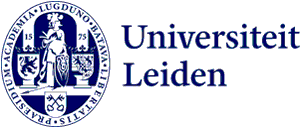Tools and tips
How do you assess whether a collaboration is permitted and desirable in terms of knowledge security? These tools and tips will help you to make that assessment. You will also find various materials for learning more about knowledge security.
Support for initiators of a collaboration
Initiators of a collaboration and the scientific director of the relevant institute use this flowchart to check whether collaboration with an institute or individual is permitted and/or desirable. The flowchart helps you to weigh opportunities (interests) against risks of a collaboration and to assess whether a risk is acceptable or unacceptable. A number of guiding principles are used in this evaluation process.
The Guide to Searching Sources presents clear step-by-step instructions for how the initiator can search a variety of sources to find information on the EU sanctions list, export control and sensitive research areas.
This guide is helpful when you’re going through the Knowledge Security Flowchart, which is used to weigh opportunities (interests) against risks in international collaboration.
This Supplementary Questionnaire is intended for initiators who have answered ‘Yes’ to questions in the Knowledge Security Flowchart. This questionnaire examines the potential collaboration in more depth.
If you are considering a collaboration with a Chinese knowledge institution, you should consult the Chinese Defence Universities Tracker (also known as the ASPI Tracker). For more information on China, see the webinars and podcasts of The LeidenAsiaCentre or consult the China Knowledge Network (CKN).
Watch, listen and read
This e-learning activity will help you with questions about such issues as undesirable knowledge transfer or ethical issues. It will also help you in assessing the opportunities and risks of a collaboration. The activity takes around 45 minutes.
This animation video explains the various terms relating to dual-use and export control. The animation lasts around 4 minutes.
Have you ever been contacted via social media about your research or teaching? Foreign intelligence agencies create fake online profiles and use them to contact people who have access to sensitive information. In this e-learning activity you play the role of an intelligence officer with a fake profile. Who are your targets? How do you approach them? Can you persuade them to share valuable data with you? The activity takes around 20 minutes.
Who has what role in analysing and reducing risks in procurement processes? This interactive infographic produced by the government gives an overview of the situation within a knowledge institution. Please note: this is a generalised representation and the situation may differ depending on the organisation.
How do you protect knowledge at the university, a place specifically intended for knowledge sharing? And how do you decide who is trustworthy and who is not? In the NPO podcast Vriend of Vijand (‘friend or foe’), science journalist Saar Slegers investigates the dilemmas behind Dutch knowledge security policy. And she wonders: whose security is actually at stake here? (5 episodes of around 45 minutes)
